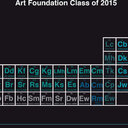Enzymatic characterization of phospholipase D of protozoan Tetrahymena cells.
Mots clés
Abstrait
Phospholipase D (PLD), which is present in plant, bacterial, and mammalian cells, has been proposed to be involved in a number of cellular processes including transmembrane signaling and membrane deterioration. We demonstrated the existence of evolutionally related PLD activity in the unicellular eukaryotic protozoan Tetrahymena. The partial characterization of this enzyme showed that PLD in Tetrahymena cells was a neutral phospholipase, which catalyzed both transphosphatidylation and hydrolysis reac tions. The activity was markedly stimulated by phosphatidylinositol 4, 5-bisphosphate (PIP2) but was insensitive to phorbol 12-myristate 13-acetate (PMA) and guanosine 5'-3-O-(thio)triphosphate (GTPgammaS), suggesting that it is a PIP2-dependent PLD and that protein kinase C (PKC) and GTP-binding proteins are not implicated in the regulation of this enzyme. For its maximal activity Ca2+ was not required. This enzyme was also capable of hydrolyzing phosphatidylcholine (PC) but not phosphatidylethanolamine (PE), implying that PC was a preferred substrate. Subcellular fractionation showed that PLD-like activity localized mainly to the membrane fraction, especially microsomes. As an initial step to explore the functions of PLD in Tetrahymena, the PLD-like activity was determined during the different culture phases, and it was found to be significantly and transiently elevated in the early logarithmic phase, indicating its possible role in the development of Tetrahymena.


